
A Long March 11 rocket took off from Jiuquan 19 September 2019 0642 UT. The rocket carried 1 visual and 4 hyperspectral Earth imaging satellites for Guangdong-based company Zhuhai Orbita, to a 510km sun-synchronous orbit.

A Long March 11 rocket took off from Jiuquan 19 September 2019 0642 UT. The rocket carried 1 visual and 4 hyperspectral Earth imaging satellites for Guangdong-based company Zhuhai Orbita, to a 510km sun-synchronous orbit.
JAXA’s Konotori 8 cargo mission to the International Space Station was scheduled for departure today, though that was postponed. At about 1205 UT 10 Sep 2019, there was an unexpected fire underneath the launch deck at Tanegashima, near two of the H-IIB rocket’s four solid rocket boosters. Response efforts continued over the following three hours.
The fire did not appear to contact the rocket, though water used to suppress the fire did hit the rocket and SRBs, a problem because, though the response effort made the launchpad safe and saved the cargo capsule, the rocket may still be damaged by either the pad fire or the unexpected mechanical stress and corrosion from the fire-fighting water.
An investigation is now underway to determine the state of the H-IIB vehicle. Mitsubishi Heavy Industries announced that the launch will not take place earlier than 13 Sep 2019; the possibility of being delayed more than a month has not been ruled out.

Launches
30 Aug 2019 1400 UT: Plesetsk Rockot, Geo-IK-2
30 Aug 2019 2331 UT: Jiuquan KZ-11, KX-09 and XX-1 experiments
A Rockot flight from Plesetsk carried the Geo-IK-2 Russian military geodata satellite to orbit, 30 Aug 2019 1400 UT. The brand-new KZ-11 rocket was lofted by ExPace from Jiuquan later the same day, at 2331 UT. The rocket carried two experimental satellites.
Vega failure announcement
ESA has announced the results of its independent investigation of the failure of arianespace Vega flight VV15, which appeared to fail just after first stage burnout. The report indicates that the second stage did in fact ignite, and looked good for just under 14 seconds, until a thermo-structural failure in the forward dome of the Z23 second stage motor caused catastrophic failure of the launcher.
A common type of thermo-structural failure in solid rocket motors is the presence of small small grain defects, such as voids or cracks, that can cause localized pockets of fuel to burn through too early. Because the fuel also acts as an ablative shield for the exterior skin of the rocket, burning through the fuel too soon is as bad or worse than using a blowtorch to cut the surrounding structure of the rocket.
A thermo-structural failure in a solid rocket motor was famously the source of the fatal launch failure of the Space Shuttle Challenger in 1986.
The fault is common in hobby rocketry, and is eliminated mainly by procedure and quality control in commercial space activities.
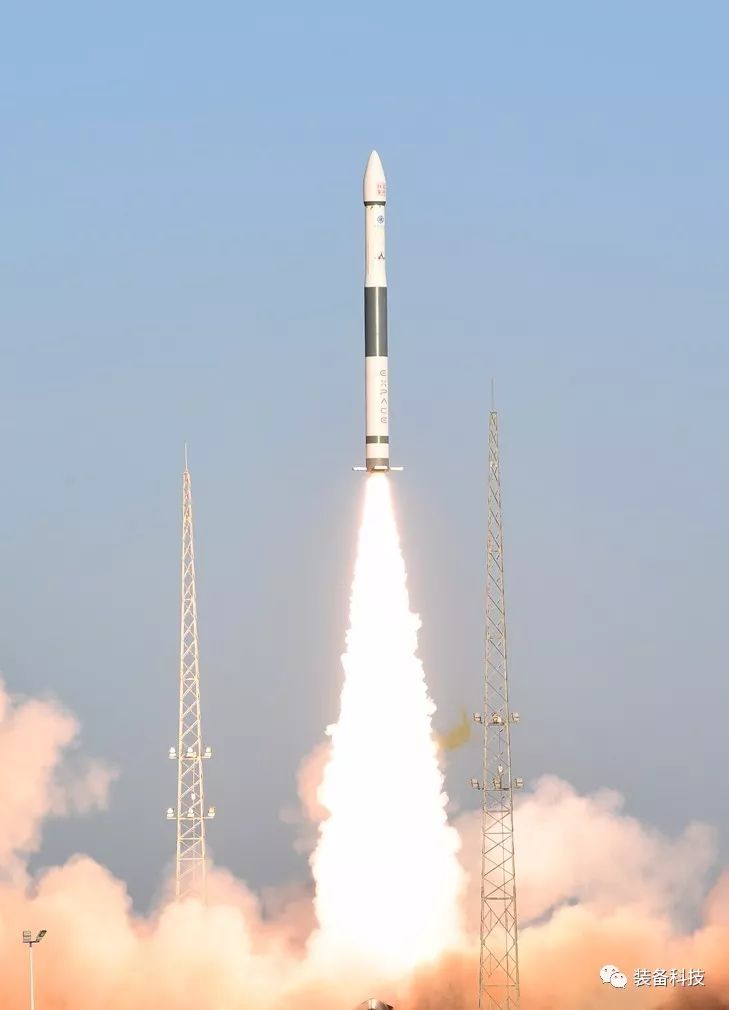
Further News
31 Aug 2019: New space launch regulations take effect in Australia
2 Sep 2019: Aeolus satellite moves to avoid OneWeb satellite
Another week without an orbital launch, though it was not without notable space events, as early Tuesday, the space station received the cargo-laden Soyuz MS-14 capsule following a dramatic docking port swap for Soyuz MS-13.
On Monday, the same three astronauts that rode up in MS-13 piled back into the vessel and flew it around the ISS, to ensure MS-14’s robotic docking system could target the perfectly functioning KURS beacon at the end of the Zvezda module. Though the blinky autodock on Poisk had foiled FEDOR the Robot, the humans had no trouble docking manually.
Spaceflight events
26 Aug 2019 0335 UT: Soyuz MS-13 loops around ISS, returns at 0359 (Skvortsov, Parmitano, Morgan aboard)
27 Aug 2019 0308 UT: Soyuz MS-14 docks with ISS on second try
27 Aug 2019 1459 UT: CRS-18 leaves ISS, splashes down in Pacific
27 Aug 2019 2201 UT: Boca Chica Starship 150m test flight
Further news
23 Aug 2019 – Radio astronomy concerns over OneWeb constellation, SpaceNews reports
23 Aug 2019: Deep Space Atomic Clock brought online
23 Aug 2019 – NASA, INPE satellite data shows a record number of fires in the Amazon rainforest
26 Aug 2019: Koch speaks from ISS on Women’s Equality Day
27 Aug 2019 – ESA ExoMars rover assembly completed in UK, moving to France for tests
28 Aug 2019: JWST assembly hits milestone
28 Aug 2019: Helicopter installed on NASA’s next Mars rover
28 Aug 2019: Midwest Express flies again
28 Aug 2019: ESA announces GAIA probe has discovered string patterns in stellar births in the Milky Way galaxy
29 Aug 2019: US Space Command ceremony at White House
29 Aug 2019: Cape Canaveral prepares for Hurricane Dorian,
NASA TV features ISS observations
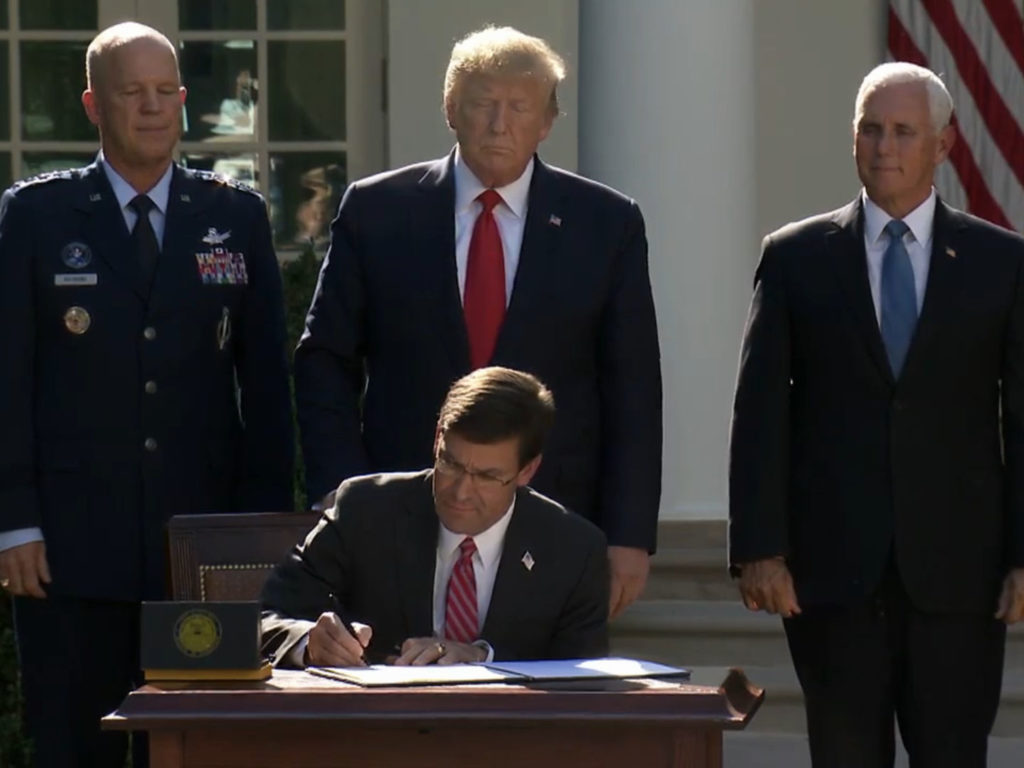
The United States Space Command, which first operated 1985-2002, resumed 29 Aug 2019. President Trump, Vice President Pence, and Secretary of Defense Esper joined Gen. John “Jay” Raymond and CMSgt. Roger Towberman in a brief ceremony at the Rose Garden of the White House, about 2020 UT.
After a brief speech from the President, the Defense Secretary signed an order establishing the United States Space Command. Raymond presented the President with a commemorative plaque, and Towberman unfurled the new flag for the Unified Combatant Command.
United States Space Command is presently headquartered with its major component, Air Force Space Command, at Peterson AFB, Colorado. Midwest locations that will participate in the new command include Offutt AFB, Nebraska and Cavalier AFS, North Dakota.
Anticipation was running high today, building since it was first announced that the SpaceX Starship – which passed a tethered lift test in July – was finally to break free of the Earth. It did.

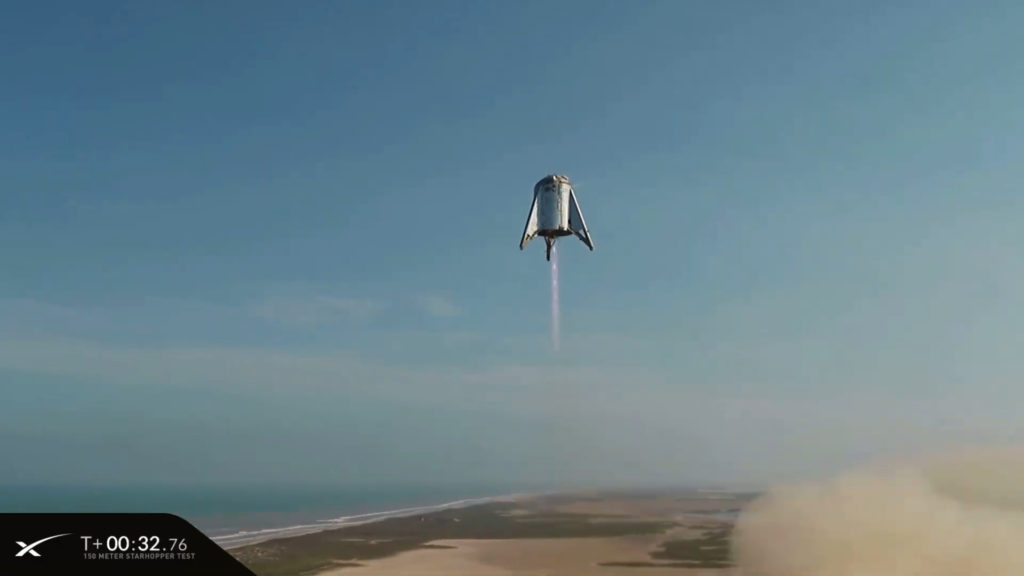
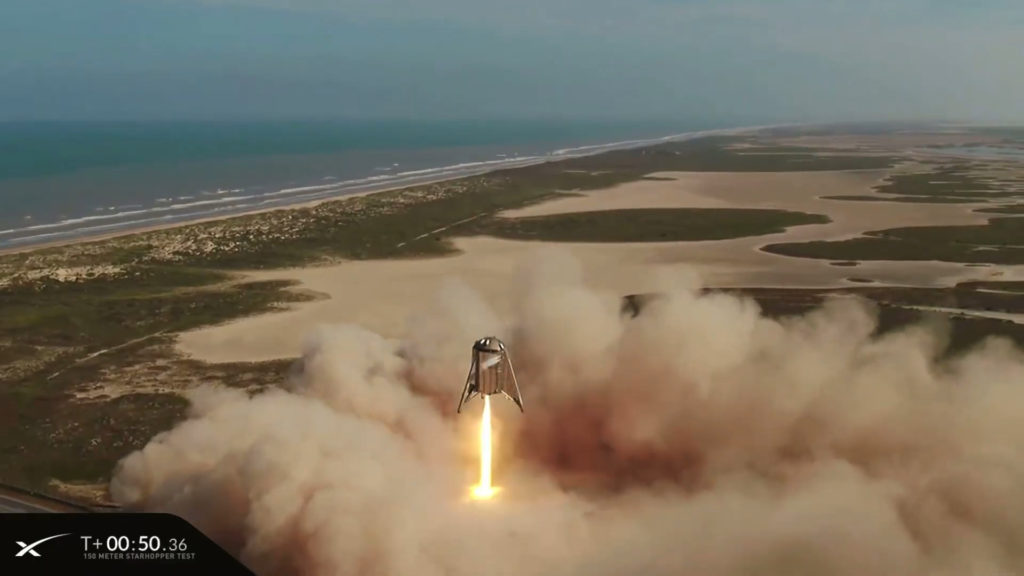
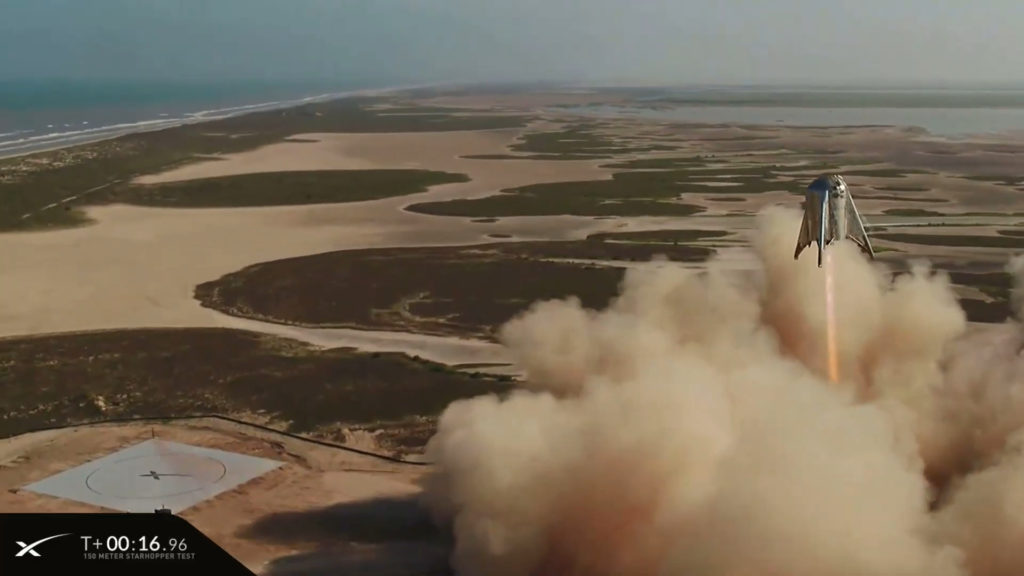
It was a glorious show – a hiss of gas, half like an oboe, half like a shoe being scraped against concrete, then two puffs of vapour, billowing pearly white into the sunny Texas afternoon. A shower of snowy condensate as the engine cracks to life. An orange beam of methalox pierces the grey shroud. Finally, the stainless steel behemoth shook free of gravity, lifting like the Wonkavator over the sandy spits of Boca Chica Beach, kicking up a tan cloud of dust and sand.
The ship soon found itself over the horizon of the high-altitude webcam SpaceX mounted to capture the feat, backlit by the sky, with the ocean lapping the shore just metres to the east as Starship gracefully hurled 150 metres into the air.
Reaching its apogee just after 30 seconds of flight, Starship gingerly tilted over toward its target landing pad, the familiar circle with a SpaceX “X” in the centre, just metres away from the launchpad, and carefully came to a soft landing thereupon, kicking up considerably much less sand on landing than on liftoff.
The test is a major milestone for the SpaceX Starship program, which will be fêted in a major press event sometime in September, after a few more features are tacked on to the vessel.
The success follows a more mundane moment earlier in the day, the return of SpaceX CRS-18 to Earth, which splashed down in the Pacific filled with over 1000 kg of returned science payloads, after Christina Koch detached it from the ISS at 1459 UT.
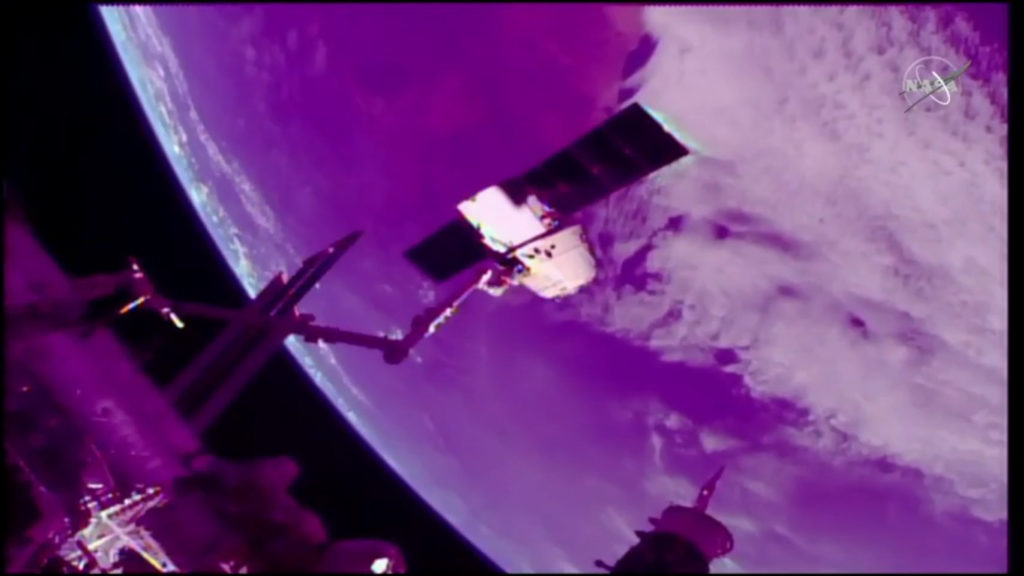
A first and a last just today – at 0338 UT on 22 August, the Soyuz-2.1a rocket was tested sending up a Soyuz capsule along with a new launch escape system. For safety reasons, Soyuz MS-14 sent no crew except FEDOR the robot, a human-piloted haptic android equally capable of gingerly holding a pop can or squeezing off a round at the gun range.
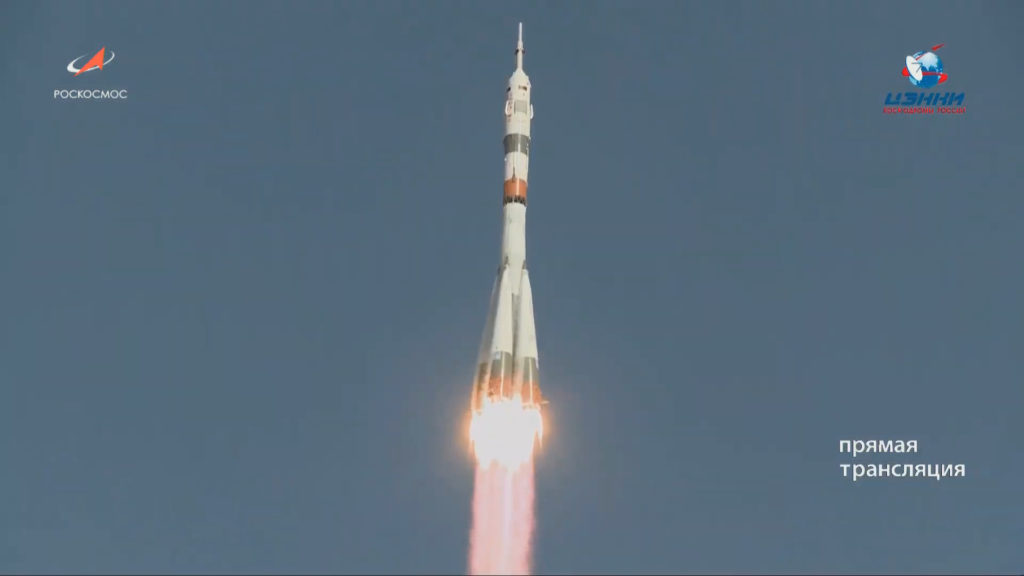
Delta IV Medium saw its last mission – a GPS satellite – going up at 1306 UT. This rounds out the D4M program, though D4H has several more launches even as the United Launch Alliance moves toward its newer Vulcan rocket.
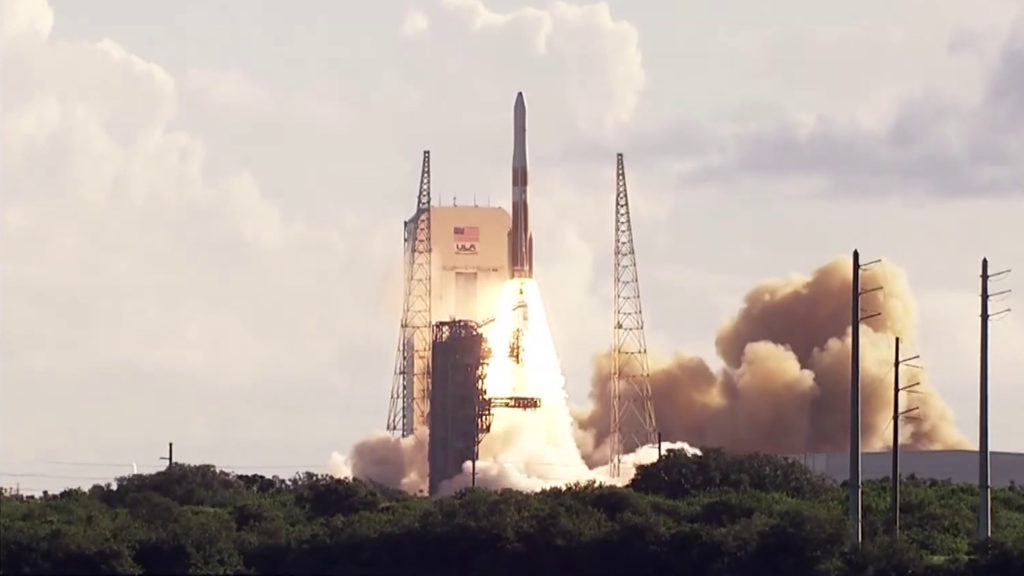
Earlier in the week, there were three more launches:

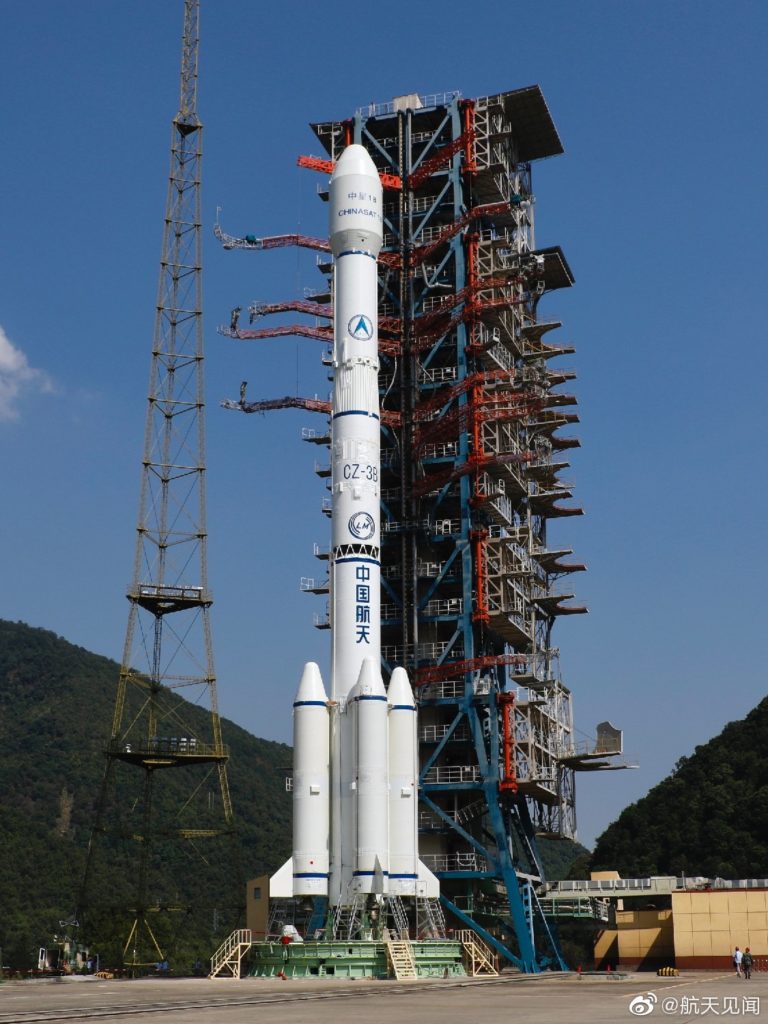

17 Aug 2019 0411 – Jiuquan Smart Dragon 1 (first launch!)
18 Aug 2019 1203 – Xichang LM3B (satellite deployment failure)
18 Aug 2019 1212 – Māhia Electron
Further News
16 Aug – The Canadian Space Agency requested research proposals for extra time on NEOSat.
20 Aug – The United States National Space Council held a session.
21 Aug – EVA218 and NEEMO NXT spacewalks at the ISS and under the sea
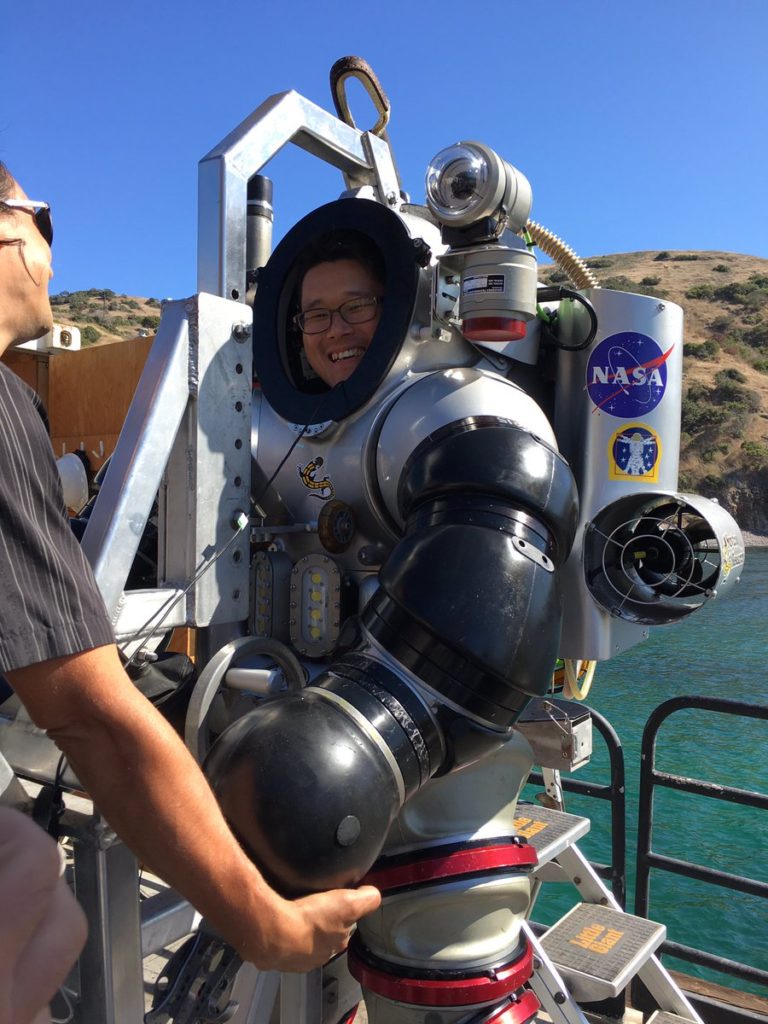
On the rocky seashore of Santa Catalina Island, California, astronauts Drew Feustel, Norishige Kanai, and Thomas Pesquet are conducting a week of undersea analog training. NEEMO NXT is training them for lunar excursions, with a submersible “rover” and “spacewalks” in simulated lunar gravity using a partially-buoyant diving suit. Uniquely for the NEEMO program, this effort does not involve overnight stays in an aquatic laboratory – the trainees get to breathe fresh air each night. The NXT mission is hosted by the University of Southern California Wrigley Institute for Environmental Studies.
Meanwhile, Nick Hague and Andrew Morgan set out for ISS EVA218 on 21 Aug 2019 at 1148 UT to install a PMA-to-IDA docking adapter. A twenty-year-old space station will develop logistics problems over time. Oddly enough, one of those problems is what shape the doors should be.
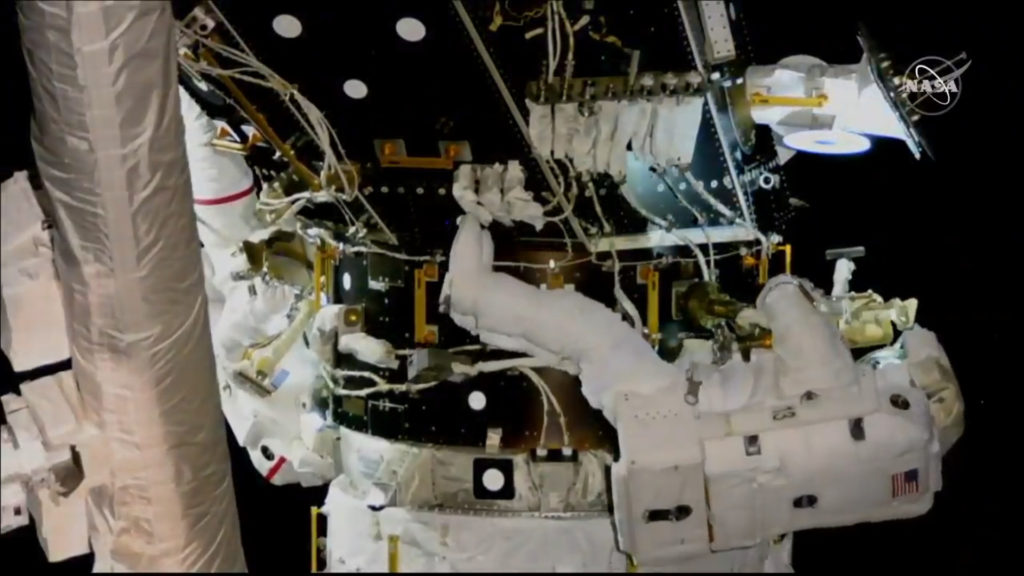
Today, there are three different types of docking ports on the ISS. Not long ago, there were four. The work today finally eliminated the old Pressurized Mating Adapter (PMA), which dates back to Shuttle-Mir. An adapter unit converted the last open PMA port to the International Docking Adapter (IDA) hatch design.
In addition to the newer IDA, the older-style Common Berthing Mechanism (CBM) is still available. Russian Progress and Soyuz spacecraft will continue to use the separate SSVP docking system.
No space launches this week, though Vector Launch suddenly shut down, and Virgin Galactic flew VSS Eve 12 August 2019 to participate in a media event 15 August at Spaceport America, as operations ramp up to punch the first of around 600 prepaid tickets within the next several months.
9 Aug 2019 Vector Launch locks out 150 engineers and staff, boots CEO, new $3.4M contract in doubt
12 Aug ExoMars probe may be delayed due to parachute problems, rover segment still on schedule
12 Aug OSIRIS-REx team names four areas suitable for sample collection after Egyptian birds
12 Aug China’s LinkSpace enters reusable rocketry race with hop test
12 Aug Wisconsin Space Grant launched a StratoStar Balloon mission
13 Aug European Space Agency featured at Stockholm Culture Festival
14 Aug Major science-on-ISS organization to be audited
14 Aug Nova Scotia spaceport proposal still drawing public concern over hydrazine hazard
14 Aug Astrophysicist José Flores dead at 23
15 Aug 29th Annual Space Conference at University of Wisconsin Platteville
15 Aug NASA announces new interplanetary lasercomm and solar sail demonstration missions
15 Aug Soon-to-be-busy Virgin Galactic facility at Spaceport America holds Open House
José Flores Velázquez, a grad student studying Physics and Astronomy at the University of California – Irvine, was shot dead outside his friend’s home in south Los Angeles, 14 August 2019.
Flores was pursuing a PhD in astrophysics, and had special expertise using supercomputers to perform kinematic simulations of galaxies using the Feedback In Realistic Environments (FIRE) method, first working with Jorge Moreno at CalPoly Pomona, and then over summer 2017 with Claude-André Faucher-Giguère at Northwestern University in Chicago. Flores’s work was featured in the Council on Undergraduate Research’s 2018 “Posters on the Hill” event at the United States Capitol, and had earned a National Science Foundation Graduate Research Fellowship.
A gofundme campaign was started to assist his family with funeral expenses.